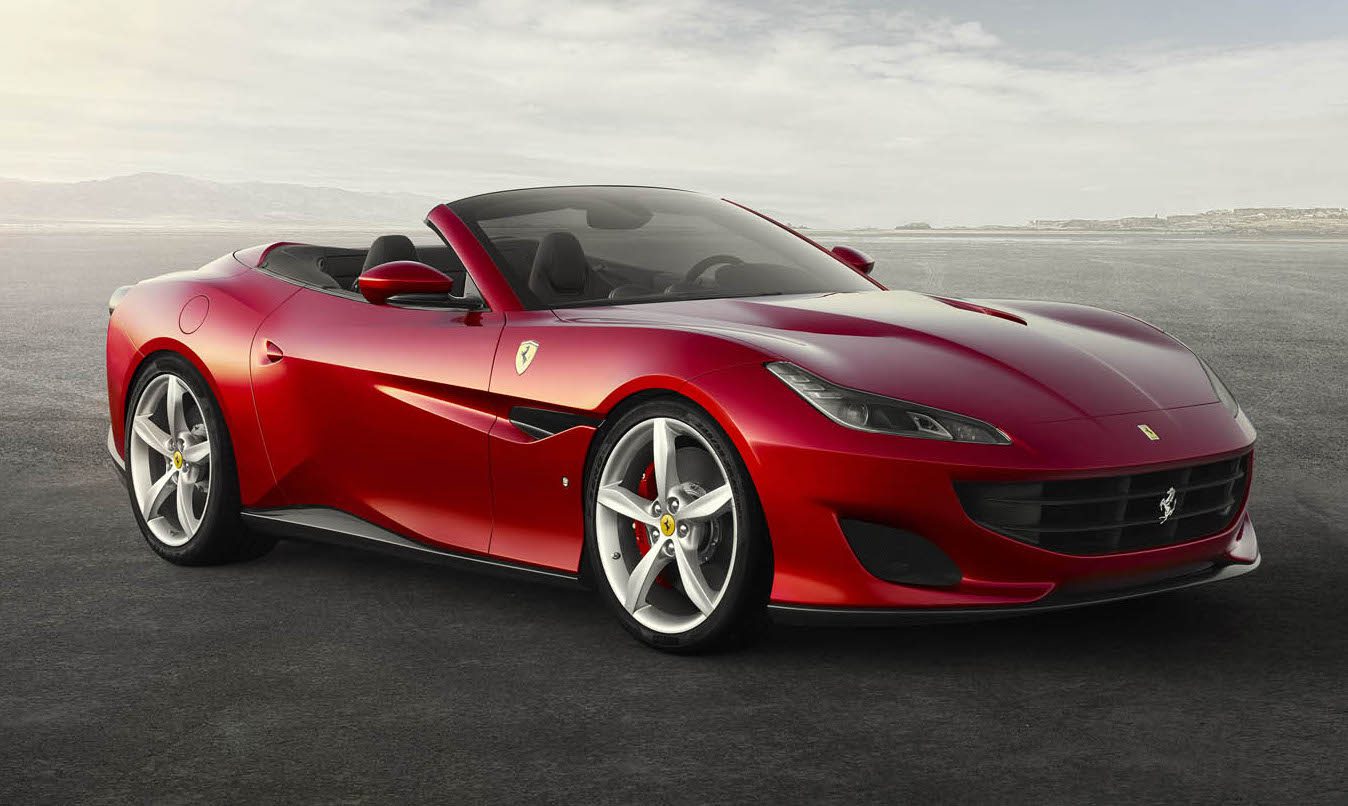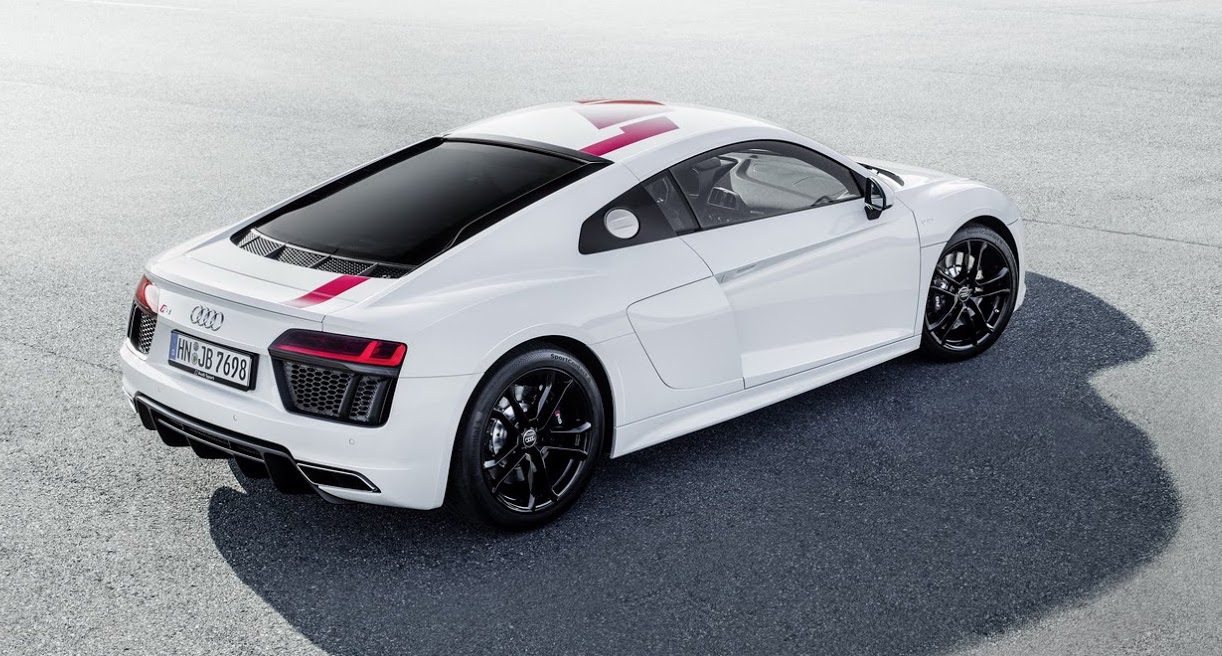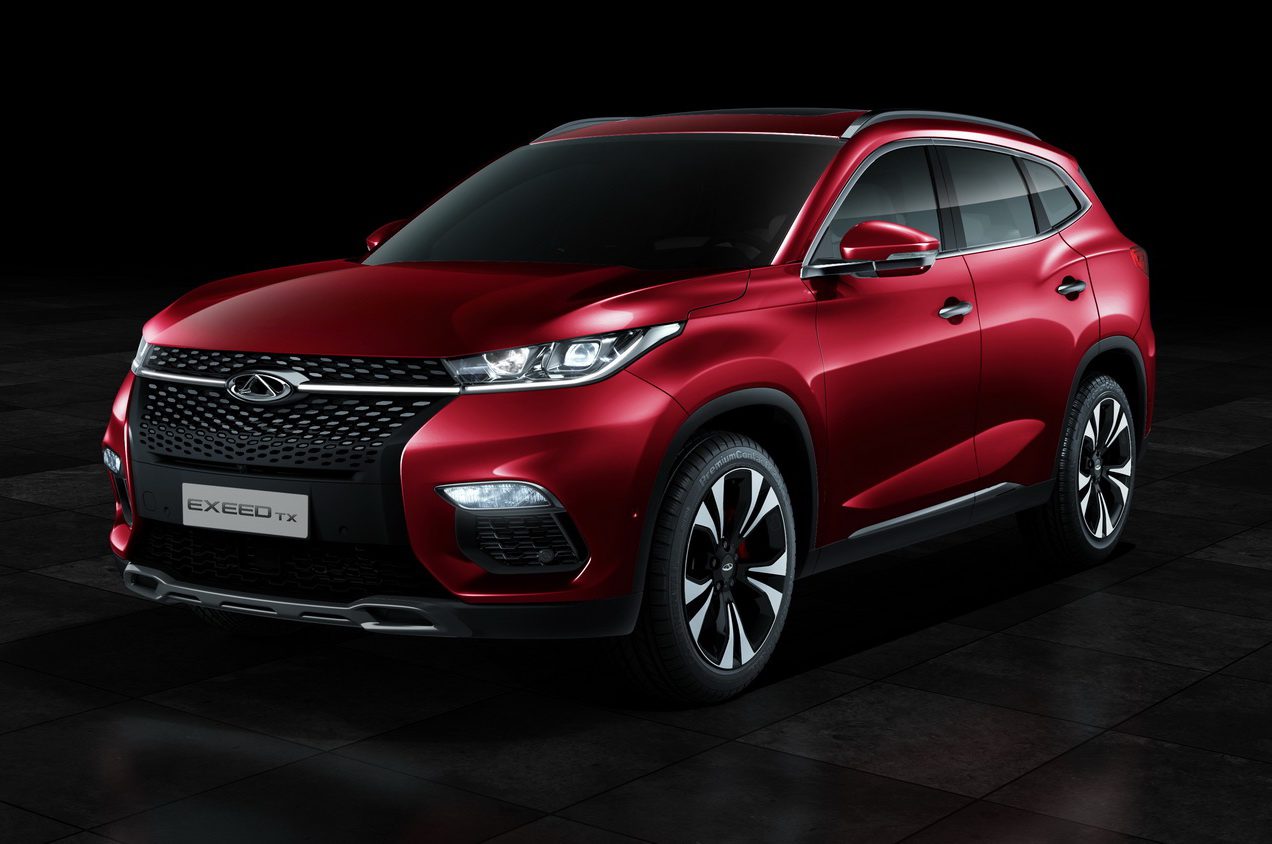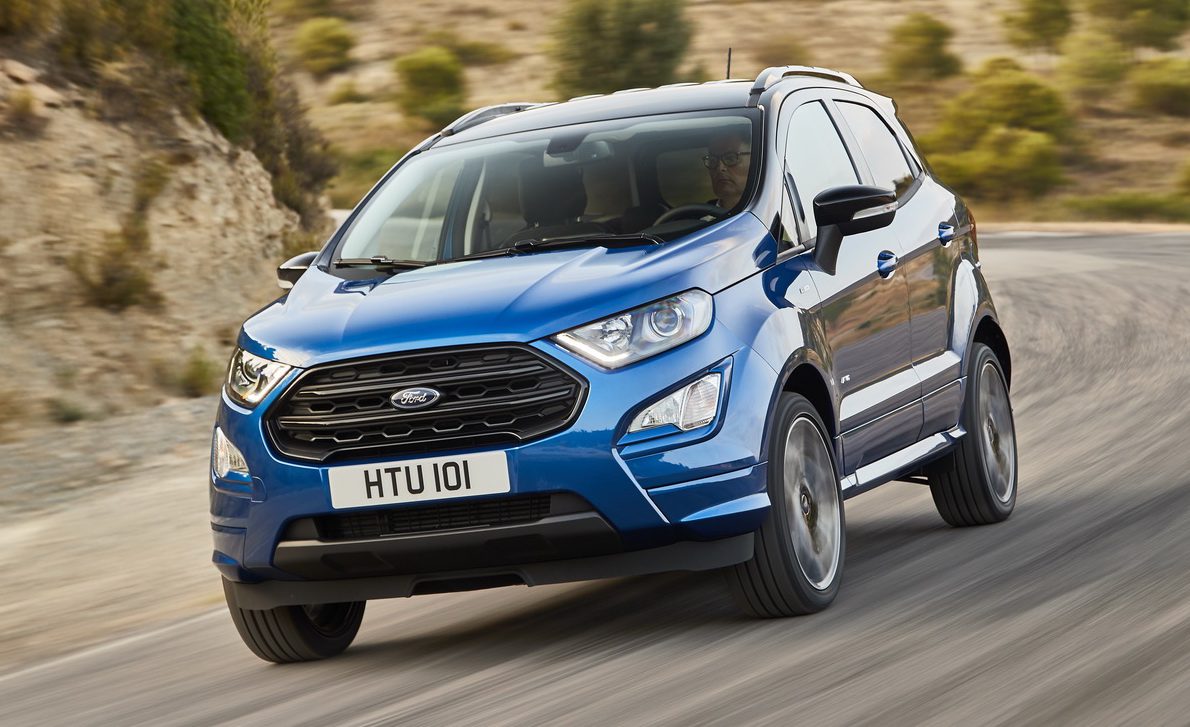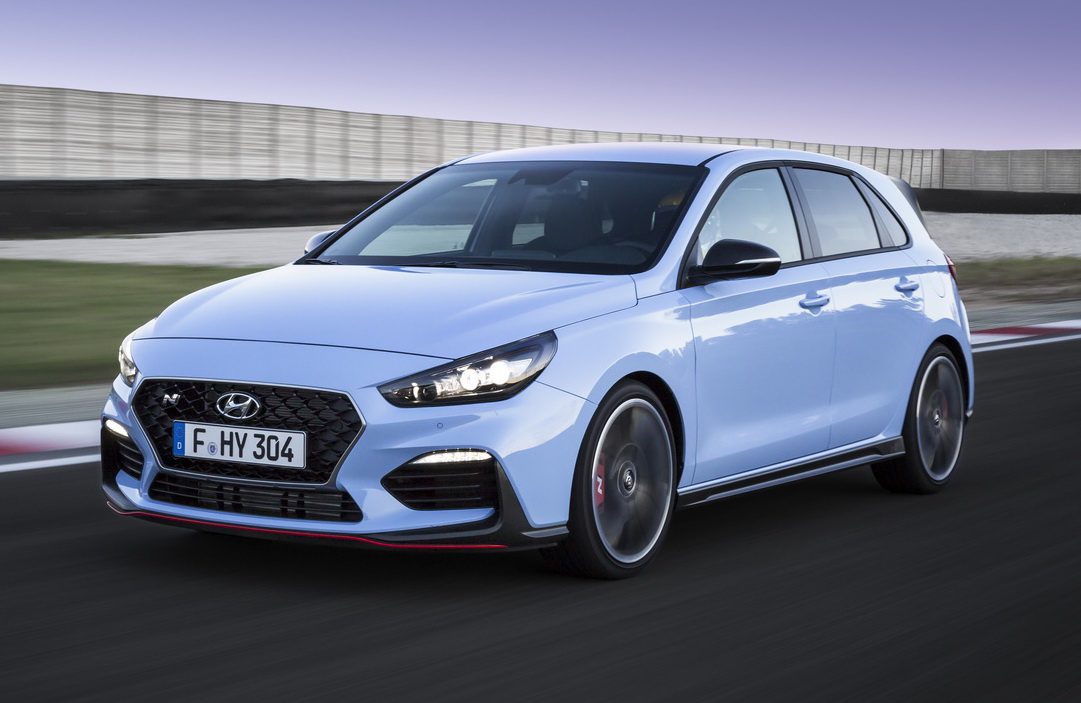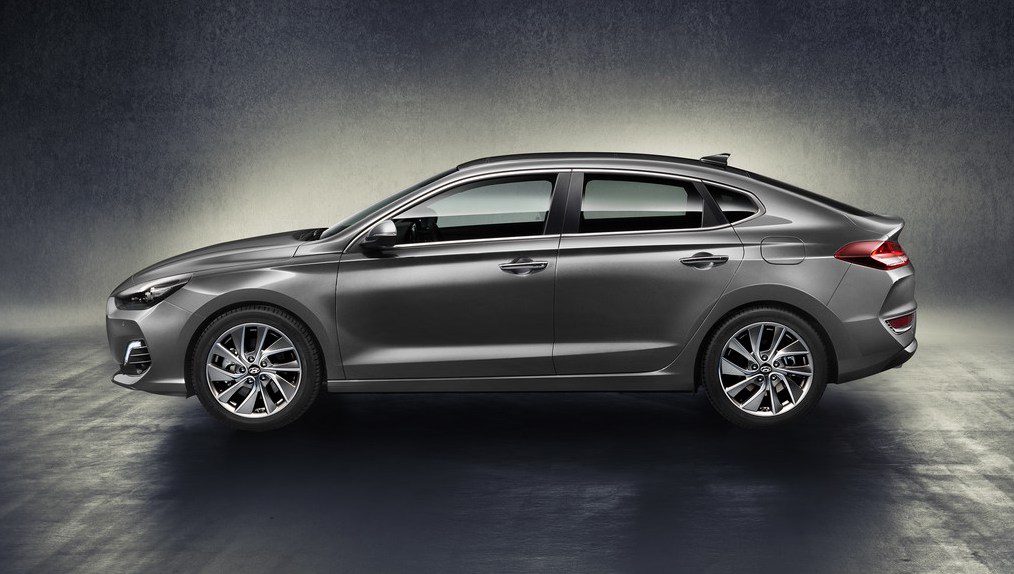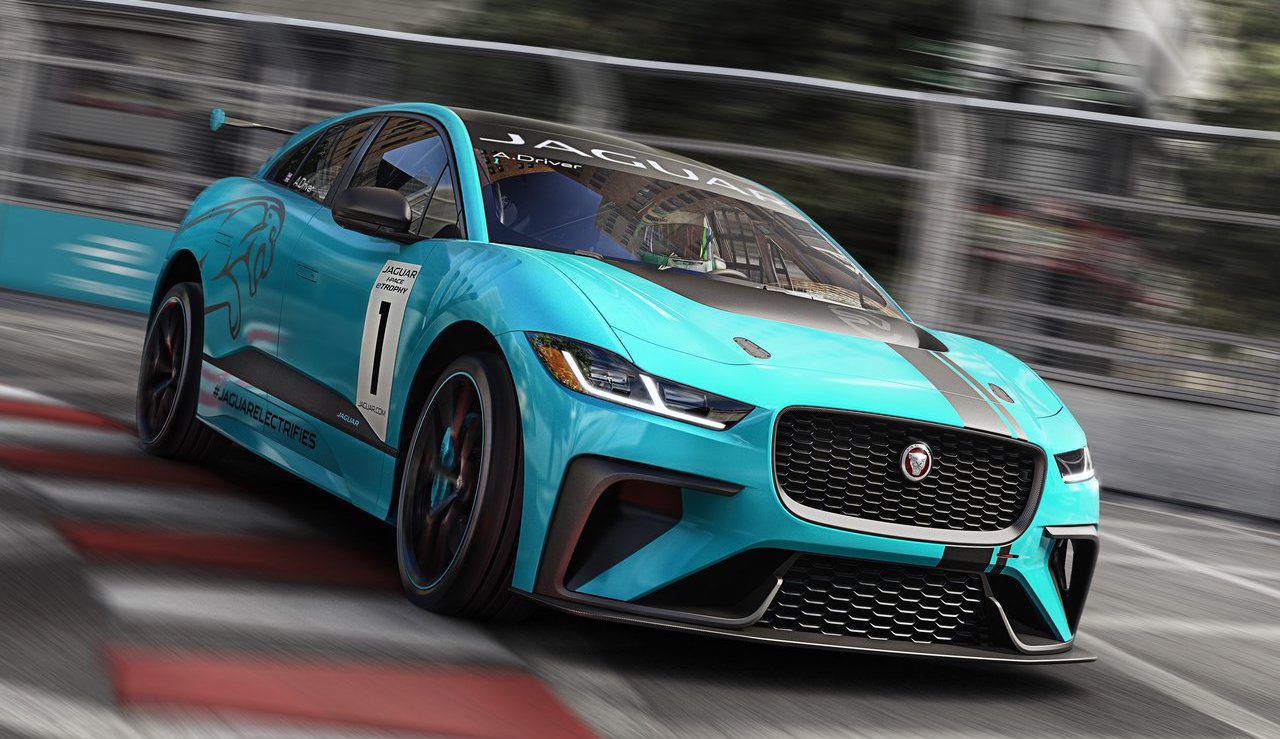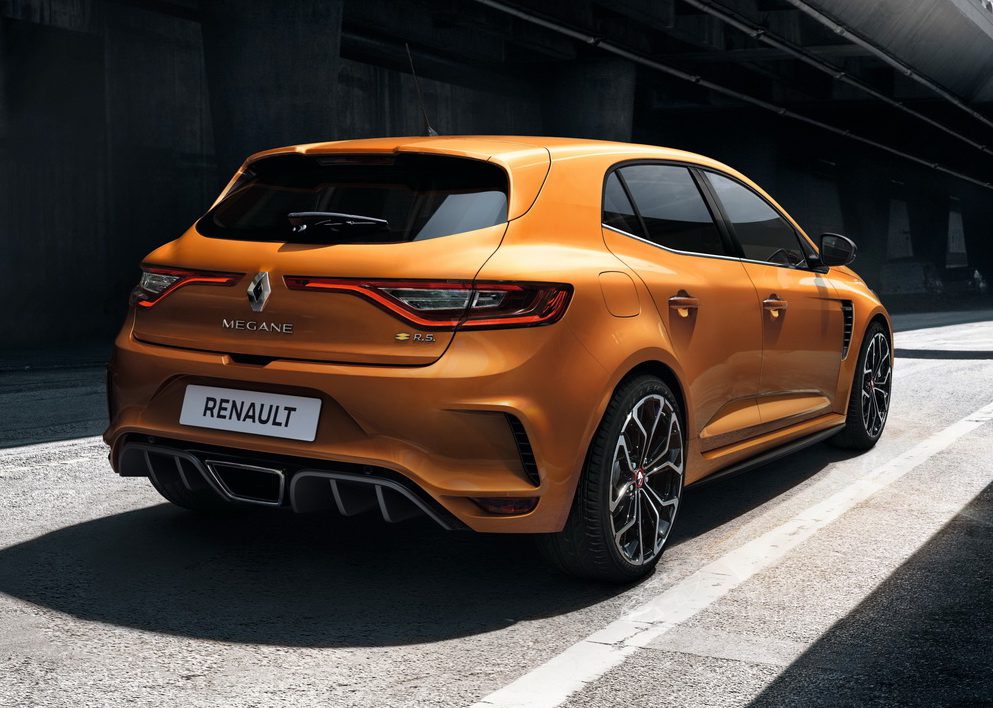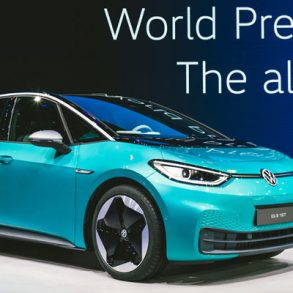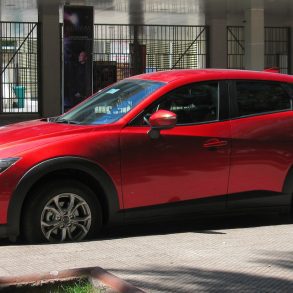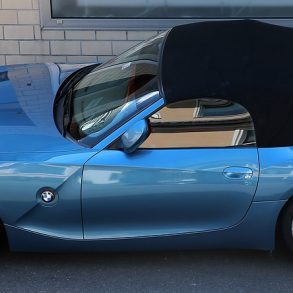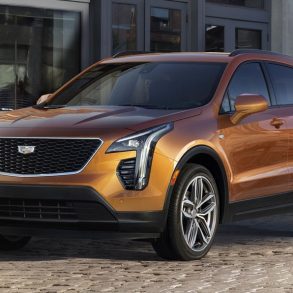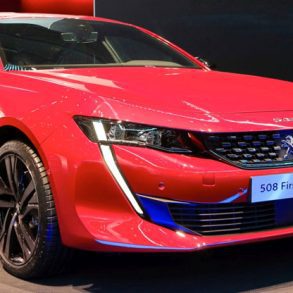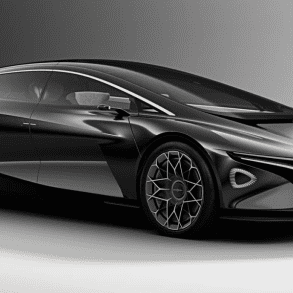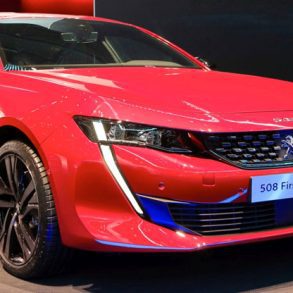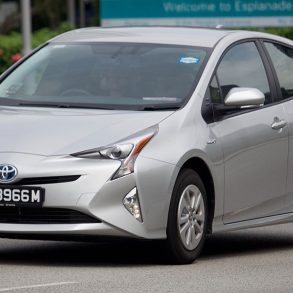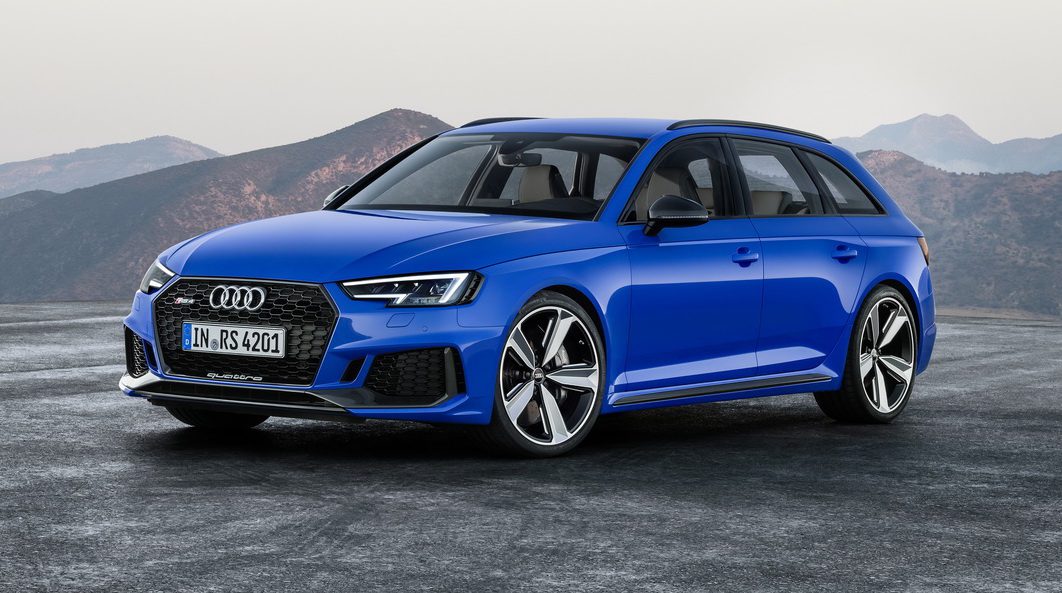
Audi RS4 Avant and BMW M5
Kriss: hit
If this is the future of performance saloons/wagons, sign me up! Sure, we should all mourn the passing of the thrilling NA V8 screamer in the RS4 and, going back two generations, a similarly high-revving NA V10 in the M5. However, if they can only imbue the new engines with a bit of charisma it’s hard to argue with the hard facts: 0-62mph (100km/h) times of 4.1s for the RS4 and 3.4s for the M5, respectively, plus a series of chassis techniques to make these big cars controllable and exciting: torque vectoring, carbon brakes, a rear-biassed 4WD system that can be fully switched off in the BMW’s case. Plus they look every bit as good as they should, with their wide tracks and swollen arches.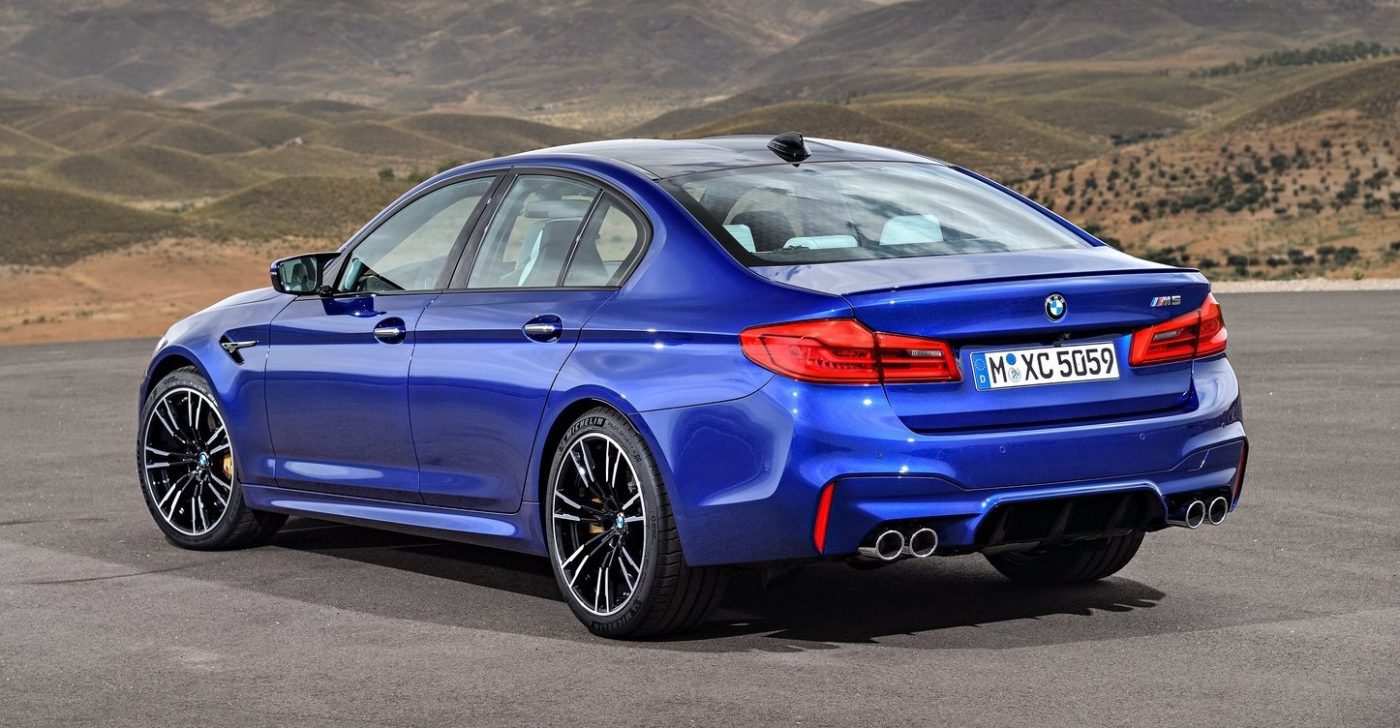
Bart: miss
If this is the future of performance saloons/wagons, I’m going to be one of those guys who’ll keep saying “everything was better back in the day”. The 450 horsepower for the RS4 is at the top of the range in terms of usability and drivability on public roads and the 600 horsepower for the M5 is above that mark. Sure, the horsepower war continues, fueled by “the internet” which demands that each rival gets bragging rights by trumping the other’s power figures with each new generation of their super-saloon/wagon. But as Kriss already touched upon, these cars are now so powerful that they need a series of control mechanisms to put all this power on the ground and to keep the driver from losing control of the vehicle. I’m not sure about you, but to me the most fun I get from driving a car is from pushing it right to the limit of its capabilities. That’s why I’ve never had more fun on public roads with a Mazda MX-5, or in terms of sedans an E36 325i. Both are easy to drive at the limit while still remaining easily controlable and at mostly legal speeds instead of life-threatening speeds. The RS4 and M5 will bring the driver in dangerous territory within seconds and the only limit that a regular driver will ever encounter is the (electronically limited) speed limit on an empty stretch of Autobahn. Not my idea of an unforgettable road trip.
Audi R8 V10 RWS
Bart: so-so
Audi has always been known for its Quattro four-wheel drive system and the R8 has been the halo vehicle for its Quattro line-up of performance vehicles. A rear-wheel drive version will make it even more similar to the Huracan which is based on the same platform and whose V10 engine shares the same mechanics. This is not necessarily a bad thing, but I struggle to figure out what Audi’s strategy is with this version of the car. Why not add RWD to the V8 version instead, as either a higher-margin “superleggera” version which has minimum weight due to the lighter engine and drivetrain and therefore better handling and more fun-to-drive due to its RWD, or as an entry-level base model at a lower price point and without the limited production run? Although I doubt the latter option is the direction in which it wants to take the R8.
Kriss: so-so
A RWD option on the R8 is a good thing, especially as it helps to bring the weight of the car down by some 50kg. However, I feel this model is a bit of a missed opportunity, mainly because it retains the big, and expensive, V10 engine. With sales figures of the 2nd generation R8 already struggling to match those of the original model, both in Europe and in the US, what I think Audi needs to do is to go back to the basics with a lighter, less-powerful model: the V6 from the RS4 would do very nicely indeed, and should attract many more customers than the expensive V10 models.
Exeed XT
Kriss: hit
If anyone needed further evidence that Chinese carmakers will eventually crack the European market look no further than to the XT, from Chery’s new, Europe-focused brand Exeed (ok, so the name is a bit silly). For all intents and purposes, this is a car that, on the surface at least, none of the mainstream European manufacturers would be ashamed to release: a PHEV powertrain with an EV range of 43 miles, 4WD, 7-speed dual-clutch gearbox, 0-62mph (100km/h) in 6.0s, a 10-inch infotainment screen and a 7-inch digital cluster. Even the styling looks very pleasant if a bit derivative, with the shape owing a lot to the Kia Sorento and the rear to the Kia Sportage.
Bart: miss
As I’ve written in an article a few months ago on how Chinese brands can crack the European car market, any Chinese brand that wants to make it in Europe will have to offer something that sets it apart from the current brands and models on sale in this mature market. Just another crossover with technology that others will match or beat by the time it hits the market will not do it. What does this car offer that it would pull Germans out of their VW’s, Italians out of their Fiats, Brits out of their Fords, French out of their Renaults and Spanish out of their Seats? Because that won’t be easy, especially for a start-up brand from a Chinese manufacturer. And the costs of launching a brand and building a dealer network are astronomic, so competing on price is not the way the Chinese (should) want to go.
Ferrari Portofino
Bart: so-so
The California has never really appealed to me designwise, and its replacement is somewhat of an improvement in that it features a more aggressive facia and a more expressive overall look. However, when looked at directly from the front, it’s hard to distinguish from the 488 as Ferrari’s design department seems lost for inspiration. Its rear wheel arches (or shoulders) look muscular and surprisingly I think it looks better with the top up than with the top down. Of course the new model has a significant power bump over the outgoing California T and is performance figures are absolutely Ferrari-worthy (0-100 km/h in 3,5 seconds), but I’m not sure that would be the main reason for buyers to choose Ferrari’s entry-level model.
Kriss: so-so
The press is abuzz about how the all-new Portofino is a giant improvement over its predecessor, the California T. Well, maybe it’s that I haven’t seen the model in real life yet, but to me the Portofino looks only marginally better than the California T, and in fact resembles more an extensive facelift than an all-new model. Yes, the stats are impressive, but I was hoping that the replacement to the gawky California (which, if you believe the rumor mill, started life as a Maserati model) would bring back some of the old-fashioned Ferrari elegance. I guess the Pininfarina days are well and truly gone…
Ford EcoSport facelift
Bart: miss
Ugh, seriously? The EcoSport has never been a winner in the design department, but this facelift doesn’t help much. The Kuga and Edge inspired grille should give it the Ford crossover corporate grille, but it just doesn’t match the rest of the vehicle and it looks out of proportion on this smaller crossover. And adding a contrasting color for the roof has never really appealed to me, but it looks especially awkward on models that have never been designed with that in mind in the first place. Sorry Ford, this car was and remains out of place in Europe and putting some lipstick on this pig does not make it any prettier.
Kriss: miss
If the Exeed XT was an example of how to launch a crossover for the European market, the Ford Ecosport is an example of how not to do it. Initially barely adapted for European roads from its original target markets of India and Latin America, the pre-facelift Ecosport was generally viewed as the worst car Ford had put on sale since the hapless European Ford Fusion, a fact reflected in the model’s lackluster sales. And now Ford thinks that all it’ll take to rectify the situation is to graft on a giant grille that, as Bart pointed out, does not fit with the rest of the design, give the model a new interior modeled on the previous-generation Fiesta (except for the infotainment screen) and a faux-sporty ST Line? Makes you wonder if they want to succeed in this segment…
Hyundai i30 N and i30 Fastback
Kriss: so-so
The 3rd generation is a capable but rather characterless car, having traded the 2nd generation swoopy styling for a more elegant/staid appearance (depending on who you ask) in pursuit of the VW Golf. The sporty N version and the new Fastback bodystyle are meant to re-inject some excitement into the i30 range, but I feel they only succeed part-way. Sure, the i30 N has up to 280hp from it’s 2.0-liter turbo engine, promising a 0-62mph (100km/h) time of 6.1s, but for it to truly succeed against the likes of Fors Focus ST, Seat Leon Cupra and VW GTI Hyundai really should have given it more bespoke styling, not to mention a better launch color than the Trabant baby blue, or the silly “N” moniker that sounds anything but sporty. As for the Fastback, it tries hard to inject some sex-appeal into the i30 package, but the end result is more a liftback in the vain of early 1990s Ford Escort or late 1990s Toyota Corolla, rather than a shrunken Audi A7 or Mercedes-Benz CLS.
Bart: miss and hit
I totally agree with Kriss on the i30N, in that Hyundai has missed the opportunity to set it further apart from the bread-and-butter models in terms of styling. Giving the halo version a more expressive design also would have allowed it to offer some of those sporty styling cues on the standard models at a nice margin, as for example Audi does with its S-Line. In cold numbers, it has the goods to deliver performance-wise, but this type of car is bought mostly on emotion, and that’s where the N falls a bit short.
On the Fastback Kriss and I disagree again, as I do think it actually looks pretty good, although I wouldn’t use the term “premium styling” as Hyundai does. It’s still very obvious a Korean compact car, but the coupe-like roofline and especially the “duck-tail” rear end really do give it some flair in my opinion.
Jaguar I-Pace eTrophy
Bart: hit
This idea seems so out-of-this-world that it’s almost funny: we’re slowly getting used to electric race cars, but a race SUV just seems plain wrong. A combination of the two makes this introduction especially noteworthy, but it makes total sense when you think of it. Jaguar competes in Formula E, an all-electric racing series that thusfar has lacked a support series in the three seasons it has been around so far. The British brand is also launching its first electric vehicle with the I-Pace crossover, so combining the two makes total sense from a marketing point of view. Racing an 850 station wagon in the British Touring Car Championship in the mid-1990s was also a huge PR stunt from Volvo and it helped change the public’s perception of wagons. In Europe, at least.
Kriss: hit
I am not necessarily a huge fan of the incoming Jaguar I-Pace (see my views on its styling), but if you’re going to launch an EV crossover and attempt to convince the buying public that it’s a sporty car, you would be hard pressed to think of a better way than what Jaguar has done: launch a one-off race series which will run before each Formula E race. After all, the F1-supporting Porsche Supercup has done the brand no harm
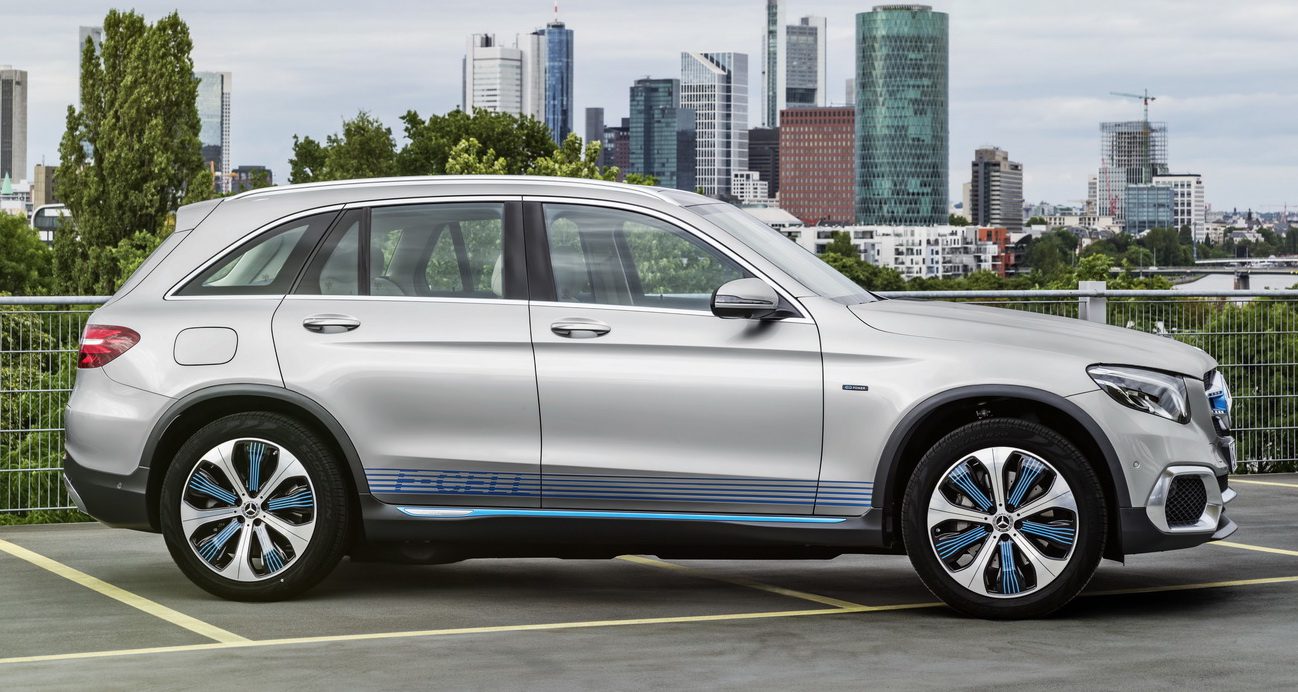
Mercedes-Benz GLC F-Cell
Kriss: so-so
Fuel-cell cars? Good. Plug-in hybrids? Good. A plug-in fuel-cell car? Well, to me it’s not so clear that this is such a good idea. On paper, the GLC F-Cell is a big improvement over the brand’s previous effort, the B-class F-Cell, offering a combined electric/hydrogen range of 272 miles (437km). However, that is still less than the range offered by cars such as the Tesla S, and only slightly more than the larger-battery Renault Zoe, its electric-only range is just 30 miles (49km), while it’s total power of 200hp is nothing to write home about. However, what dooms this idea in my head is that the owner would have to re-adjust their habits to incorporate two new sources of power relative to a gas-powered car (electricity and hydrogen), which seems too much to ask of all but the most committed proponents of the fuel-cell technology.
Bart: miss
It’s no secret I’ve never been a big fan of hydrogen fuel cells. I think battery technology will continue to improve and the range of BEVs will continue to increase, as well as charging possibilities like wireless induction charging etc. If we’re going to a world without vehicle ownership and autonomous shared vehicles, fuel cell technology makes even less sense, especially when considering the investment it takes in building a refueling infrastructure. The major benefit of hydrogen over battery technology is that it’s quicker to refuel a fuel cell vehicle than it is to charge a battery electric car. The other is that at this point in history the range of BEVs is still limited, albeit growing fast. Plug-in hybrids are an expensive solution to reduce range anxiety as long as battery technology is unable to offer sufficient range to convince consumers they won’t get stuck at the side of the road without juice. It just doesn’t make much sense to add both an electric motor with a battery pack and an internal combustion engine with a fuel tank in one vehicle, as it adds weight, complexity and cost. That’s less of an issue with a fuel cell vehicle with plug-in technology, but then at least I’d expect record breaking figures in terms of range and/or performance, but as Kriss already pointed out, the GLC doesn’t offer any of those things.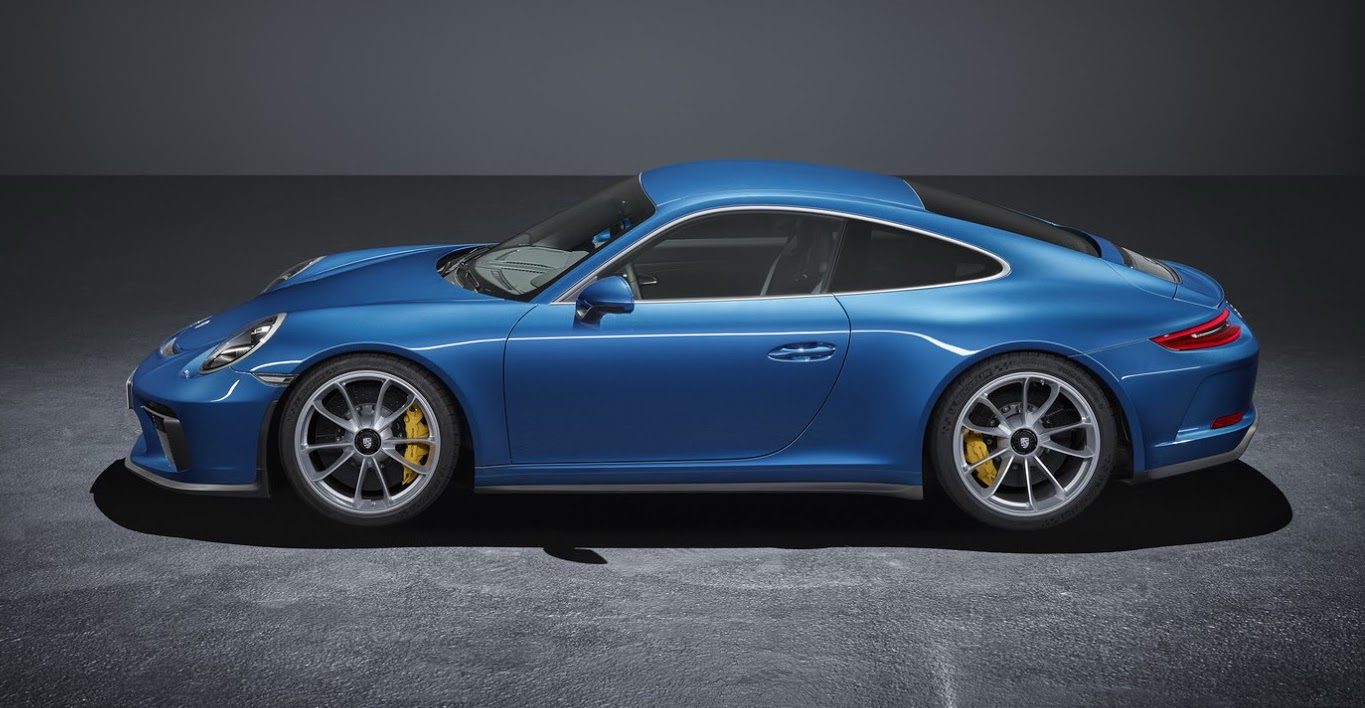
Porsche 911 GT3 Touring Package
Kriss: hit
A manual Porsche GT3 without the brash spoilers, what’s not to like? With the mainstream 911 having all gone turbo, this is the last chance to experience the 911 “as it was meant to be”.
Bart: hit
Some have said buyers of a 911R would be mad at Porsche for making what’s basically a more affordable, non-limited edition of the car they’ve paid a ton of money for. However, I think the mystique of the 911R is exactly being a limited edition and that’s what will make it hold or actually increase its value over time. The GT3 Touring Package has all the goodies: a normally aspirated engine with a manual gearbox but without the somewhat over-the-top rear wing that is the eye catcher of the normal GT3. Porsche simply makes the GT3 package appealing to a greater pool of potential buyers. More GT3’s on the road, more manual Porsches on the road, everybody should be happy. Especially Porsche itself.
Renault Megane Renault Sport
Bart: hit
Now this is a car of which I’d say “What’s not to like?”. Renault has a mouthwatering history with hot hatches, with both the Clio and Megane in their previous iterations receiving widespread praise and enjoying huge popularity all over the world (did you know Japan is Renault Sport’s 5th largest market?). The latest Megane RS brings us more of the same, but adds extra agility thanks to it four-wheel steering system. It gives buyers the options of a hardcore Cup version or a slightly more daily-drivable Sport version and will add a more powerful Trophy edition later on. It even has the option of a manual or an automatic gearbox, something the fans of the smaller Clio RS can only dream of.
Kriss: hit
Here I 100% agree with Bart. The hot-hatch market has been going through a bit of a renaissance of late, and it’s into this crowded field that Renault Sport launches its latest offering, the Megane R.S. The signs are all very positive: the new model shares its engine with the upcoming Alpine coupe, offering at least 280hp, and promises something special in the chassis department, thanks to substantially-wider tracks and Renault Sport-fettled version of Megant GT’s 4-wheel-steering system. Sure, a part of me wishes the car looked even more aggressive, but there is a very good chance Renault Sport will make it so when the stripped-out Cup models arrive further down the road.

